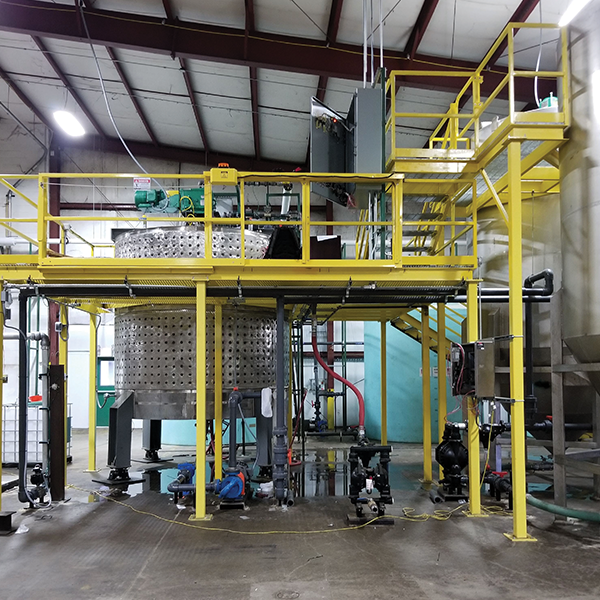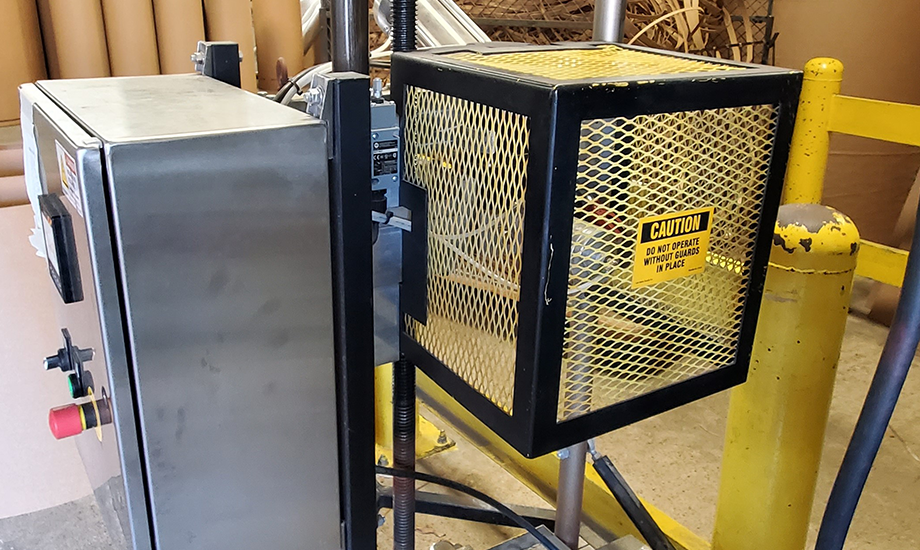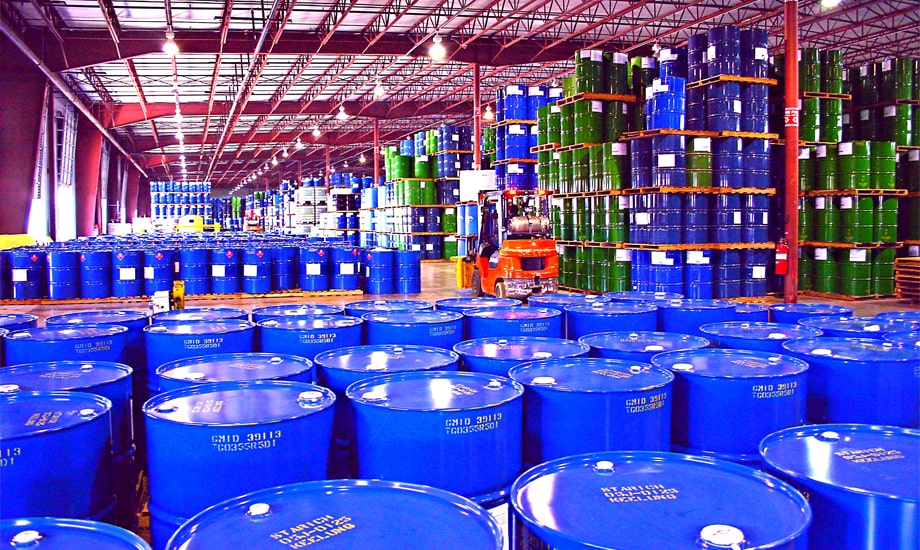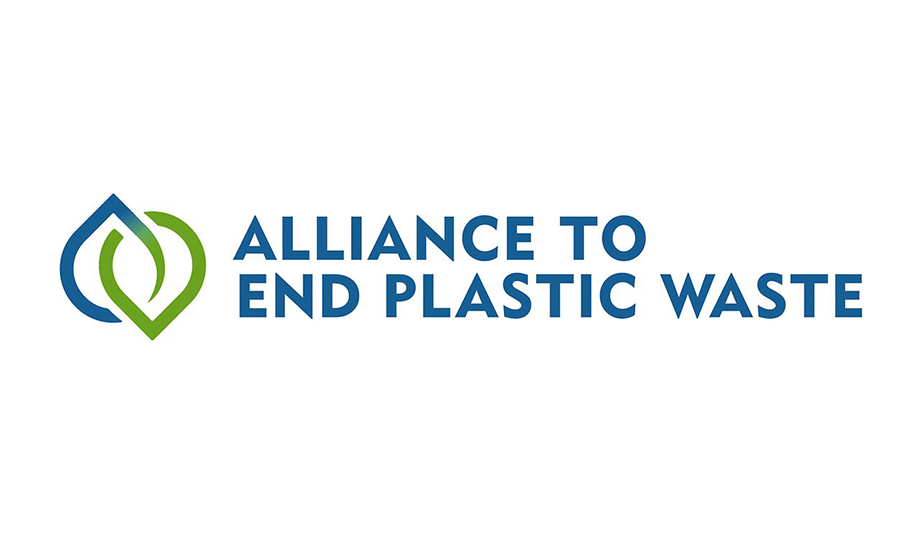פַּסִים
- Greif has a responsibility to reduce our operational waste and support the transition to a circular economy. As part of our Build to Last strategy, we are working to advance closed-loop and zero-waste processes both in our operations and for our products.
- We include a waste key performance indicator in Greif’s monthly reports shared with managers and above.
- In 2022, 43 facilities achieved zero waste to landfill. We continue to make considerable progress across our remaining facilities as our teams collaborate globally to manage difficult-to-divert waste streams.
Why Waste Matters
Greif has a responsibility to reduce our waste and support a transition to a circular economy as part of our Build to Last Strategy. Focusing on closed-loop and zero-waste processes enables us to reduce our operational packaging and landfill waste. Internally, reducing waste has positive environmental impacts, reduces costs, mitigates risks and supports our health and safety goals. We also pursue opportunities to decrease raw material use and resource conservation in our value chain. We deliver on our customers’ needs by providing lighter-weight, more cost-effective products. Reducing waste positively impacts the communities in which we operate by mitigating adverse health outcomes. We will continue to address global environmental waste challenges by advancing waste reduction efforts and developing product lines with minimal waste.
ממשל
Greif’s Global Waste Team oversees our waste program and reviews our waste report monthly. We also include a waste key performance indicator in Greif’s enterprise scorecard and monthly reports shared with managers and tracked via the Greif Business System 2.0 (GBS 2.0) and Must Win Battle (MWB) scorecard. The Global Waste Team, comprising Greif colleagues from each business unit and region, meets monthly to discuss our waste reduction initiatives and challenges. The Waste Team and regional business unit leaders hold facility management accountable for managing and reducing waste and collaborate with teams to find unique, specified opportunities at each facility. We empower our production colleagues to participate and advance our waste strategy with their work through training and internal communications. Additionally, we have realized engagement benefits from the success of our waste management programs that our production colleagues see first-hand. Greif’s Environmental Health & Safety (EHS) policies, hazard communication program and hazardous waste management training, given to all colleagues interacting with hazardous waste, govern the labeling, handling, storage, sorting and transportation of hazardous waste.
Greif’s Compliance Management System (CMS) allows us to collect data, monitor performance and measure progress accurately and efficiently. As part of our CMS, we require all facilities to report monthly waste data and submit invoices for verification. Facility waste roadmaps are also created, stored and reviewed in our CMS. In 2022, we took additional steps to improve our data governance processes by assuring waste data and implementing other controls to facilitate more prompt and accurate data collection.
Each GIP facility has developed a detailed waste matrix that identifies each of the facility’s waste streams and associated disposal methods (recycling, reuse, landfilling, etc.). We leverage the matrices to understand each facility’s waste management performance, identify difficult-to-divert waste streams and build waste diversion roadmaps. Our subject matter experts work with facility managers, other Greif colleagues and partners to develop and implement processes to divert landfill waste to more circular options such as reuse or recycling. The waste matrices also serve as a collaboration tool to compare the management of standard waste streams across facilities. We have shared these waste matrices with other business units to reduce global waste further.

PPS Industrial Products Group Waste
כחלק מאסטרטגיית המעגליות שלנו, מתקן הדבק Kernersville שלנו מחזיר את ה-IBCs המשומשים שלו לניקוי ושימוש חוזר. אחד הדבקים הראשוניים מקריש עם דבקים אחרים כאשר הוא נשלח לביוב העירוני בשל רמת ה-pH שלו. כדי להבטיח שקווי ביוב עירוניים לא סתומים, המתקן לא יכול להתנקז לקווי ביוב בעת ניקוי IBCs אלה. במקום זאת, המפעל שלח את פסולת הדבק ומי השטיפה למזבלה לסילוק בטוח. בשנת 2022, הצוות החל בתהליך ניקוי יעיל יותר, מיחזור ושימוש חוזר בדבק ובמי שטיפה פנימיים. היא גם הקימה מערכת לנטרול pH כך שה-IBC יוכל למחזר את המתכת והפלסטיק שלו באמצעות תהליך סוף החיים הסטנדרטי.
In recent years, we introduced waste diversion roadmaps related to our previous 2025 waste diversion target. For facilities not meeting our goal of 90% diversion of landfills, the waste roadmaps provide insight into our facilities’ waste management and play a critical role in improving facility performance year over year so that we may achieve our 2030 goals. We also utilize colleague waste training to continue improving strategy and goals.
מטרות, התקדמות וביצועים
In 2022, we made considerable progress toward our 2025 goal to divert 90 percent of waste from landfills and our circular economy objectives. For example, in 2022, we eliminated PET usage in our construction tubes’ production. This innovation reduced waste from both our tubes’ manufacturing operations and end-of-life.
יעד 2025:
- הסט 90 אחוז מהפסולת ממזבלות מכל מתקני הייצור של Greif ברחבי העולם עד סוף שנת הכספים 2025.
- להגיע לאפס פסולת להטמנה ב-97 אחוז ממתקני הייצור שלנו.
|
FY 2022* |
Facilities With 90%+ Diversion |
Facilities With 99%+ Diversion |
Facilities With Zero Waste to Landfill |
|---|---|---|---|
|
סַך הַכֹּל |
141 |
59 |
43 |
|
צפון אמריקה |
74 |
23 |
12 |
|
Europe** |
46 |
25 |
22 |
|
אמריקה הלטינית |
11 |
1 |
0 |
|
אסיה פסיפיק |
10 |
10 |
9 |
**In April 2022, Greif finalized its divestment of the Flexible Packaging joint venture (FPS) to Gulf Refined Packaging, resulting in a lower number of overall facilities across Europe. The significant decrease in number of facilities achieving waste metrics in our European geographies is a result of this divestment.
מתקן גרייף יוסטון
מתקן Greif ביוסטון ראה שיפור ניכר ביכולתו להסיט פסולת מהטמנה במהלך 2021. המתקן התקין De-chimer, התקן שנועד להסיר בבטחה וביעילות את פעמוני המתכת המשמשים לאבטחת החלק העליון והתחתון של תופי הסיבים. לאחר הסרת פעמונים, ניתן להפנות את הסיבים והמתכת לזרמי פסולת נפרדים למחזור. מאז התקנת ה-de-chimer ביולי 2021, המתקן הסיט יותר מ-90 אחוז מהפסולת שלו ממזבלות. המתקן שולח את הסיבים לקבוצת המחזור PPS שלנו, מה שמפחית עוד יותר את עלות פינוי הפסולת.

הפחתת VOC's באמצעות שימוש בצבעי חוץ על בסיס מים
Greif is committed to using water-based exterior paints in our operations where possible, rather than high volatile organic compound (VOC) exterior paints. In Global Industrial Packaging (GIP) North America, eight of our nine steel plants use water-based paints. In GIP China, the Greif Zhuhai plant has converted to over 65 percent water-based paints, and it began testing the use of water-based regular drum liners in our products to further reduce the VOC impact of our products. The Greif Shanghai plant has converted to over 58 percent water-based paints. In EMEA, the Czech Republic, Belgium, Germany, Hungary, Israel, Italy, Portugal, Saudi Arabia, the UK, and Poland use water-based paints alongside solvent-based paints.

גרייף מצטרף לברית לסיום פסולת פלסטיק
In September 2021, Greif joined the Alliance to End Plastic Waste. Since 2019, the Alliance to End Plastic Waste has rallied around 90 member companies, project partners, allies and supporters committed to ending plastic waste in the environment. Greif joined this mission to partner with our customers and other organizations to bolster our circular economy strategy. We are the first industrial packaging firm to become a member to provide expertise from our unique perspective and be a leader in our industry. Membership requirements include investing in innovative projects to promote circular solutions.






